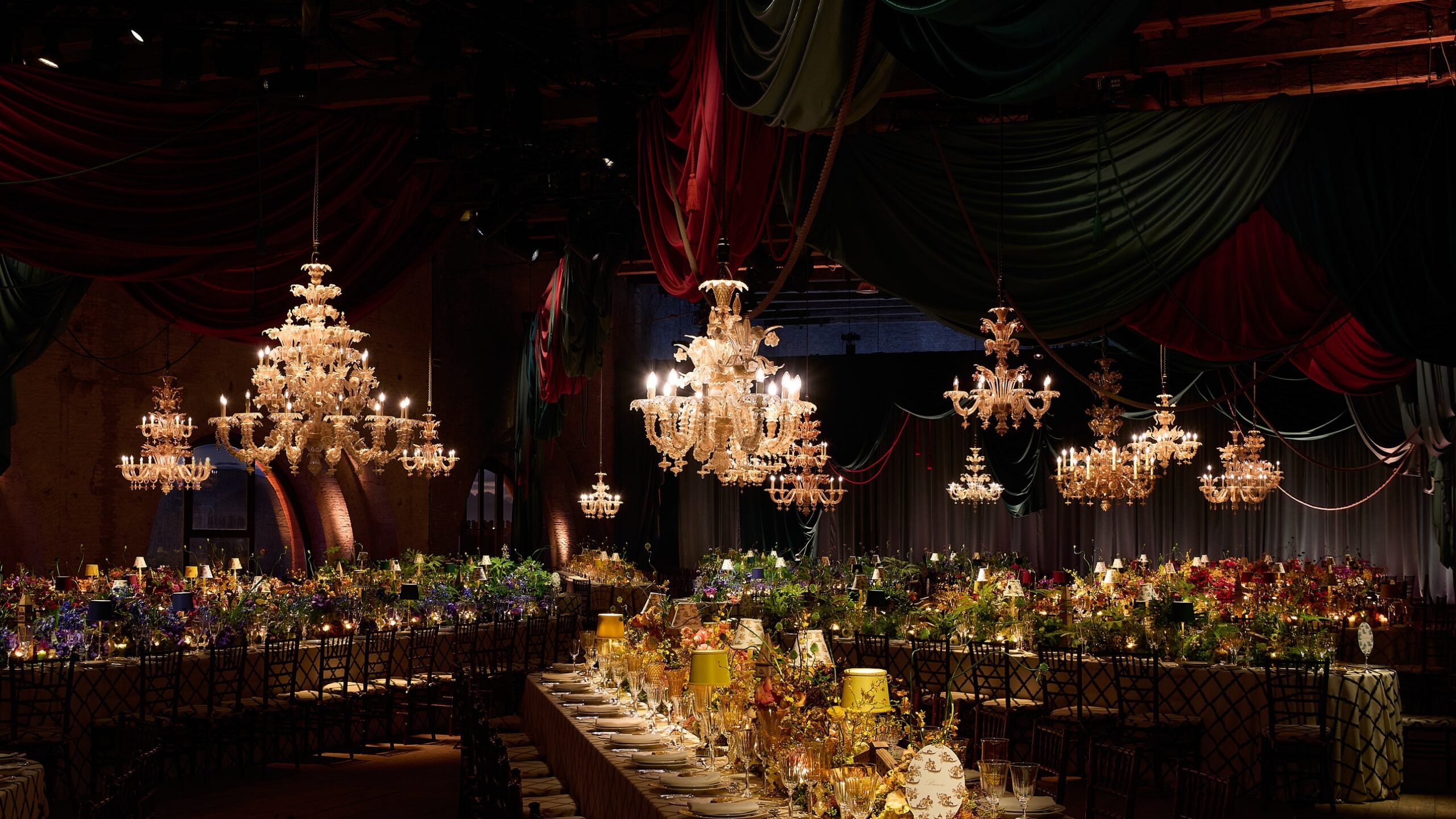
Grand balls and opulent galas have been staged in Venice for centuries— the famous Carnival apparently traces back to the Middle Ages. There isn’t a more fabulous setting to frame glamour and splendor: what can possibly rival the magic of a candlelit Venitian palazzo, reflecting its glow onto the silver waters of the Grand Canal?
Although Venitian festivities have been countless, the pinnacle of social grandeur was probably reached by the Oriental Ball at Palazzo Labia in 1959, hosted by eccentric connaisseur Charles de Beistegui. In 2019, the very same Palazzo was again the set of a fabulous ball, this time with a charity purpose: the Tiepolo Ball hosted by Dior, celebrating the brand’s collaboration with the Venitian Heritage Foundation to support the preservation of the city’s cultural patrimony. Holding onto the tradition, during this year’s Biennale’s opening, Dior again partnered with the VHF, throwing a dazzling fundraising at Arsenale Vecchio, a military site occupied by the Italian navy, usually closed to the public yet exceptionally open to host the Naumachia ball.
“Naumachia were spectacular aquatic re-enactments of naval battles, originating in the Roman Empire and enjoyed by European royal courts in the 17th and 18th centuries”, explained Toto Bergamo Rossi, the indefatigable director and mastermind behind VHF. “We thought it an appropriate theme for the site, as it hints at Venice’s eternal liaison with water and the sea.” Gondola-shaped boats with rowers in traditional costumes welcomed guests on the dock of Arsenale Vecchio, on loan from the Regata Storica, the historical regatta that takes place every year on the first Sunday in September re-enacting Venice’s Sposalizio col Mare (the Marriage of The Sea), they were refitted and brightly decorated for the occasion. “Venice was famous for its sumptuous festivities,” explained Bergamo Rossi. “Throughout its history, ephemeral architectures have been built as homages to welcome royals, wealthy merchants, and artists visiting the city. We wanted to pay homage to that celebratory tradition.”
The lavish dinner was held in a vast salon, set up with a breathtaking décor by Cordélia de Castellane, Dior Maison’s artistic director; guests marveled at her wondrous tablescapes, where mirror centerpieces were embellished with exquisite flower arrangements. “Monsieur Dior was an avid gardener; flowers have influenced his entire creative life, from color palettes to prints to the dresses’ shape; I wanted to infuse this place with a spirit of poetry,” said de Castellane. Walls were draped in luscious velvet; Murano gold-dusted glass vases and chandeliers gave off a magical, atmospheric radiance; Venitian artisans created wooden miniatures of the city’s landmarks, like the Rialto Bridge, the San Marco bell tower and minuscule gondolas, interspersed on tables between bouquets of blooms; tablecloths were printed with Arlequin motifs. “Working on tablescape décor is like telling a story, or writing a love letter, or dreaming of an imaginary voyage,” explained de Castellane. “It’s almost like painting, or putting makeup on a beautiful face: a touch of lipstick, a dab of blush, a drop of perfume, just to make it resplendent.”
The magnificent charity gala was attended by, among others, President and CEO of Dior Couture Delphine Arnault; designer Maria Grazia Chiuri and daughter Rachele Regini; brand ambassadors Beatrice Borromeo and Giordana Marengo; artists Eva Jospin, Jeffrey Gibson, Jean-Michel Othoniel and Johan Creten; interior designer Pierre Yovanovitch; photographers Brigitte Lacombe and Brigitte Niedermair. Copious funds were raised for the restoration project of the Arsenale’s Porta Magna, and for the renovation of the Ca’ d’Oro museum, whose name (literally “the House of Gold”) echoes Jean Cocteau’s words about his friend Christian Dior, who he described as “a light genius in tune with his time, whose magical name includes God and gold.”
